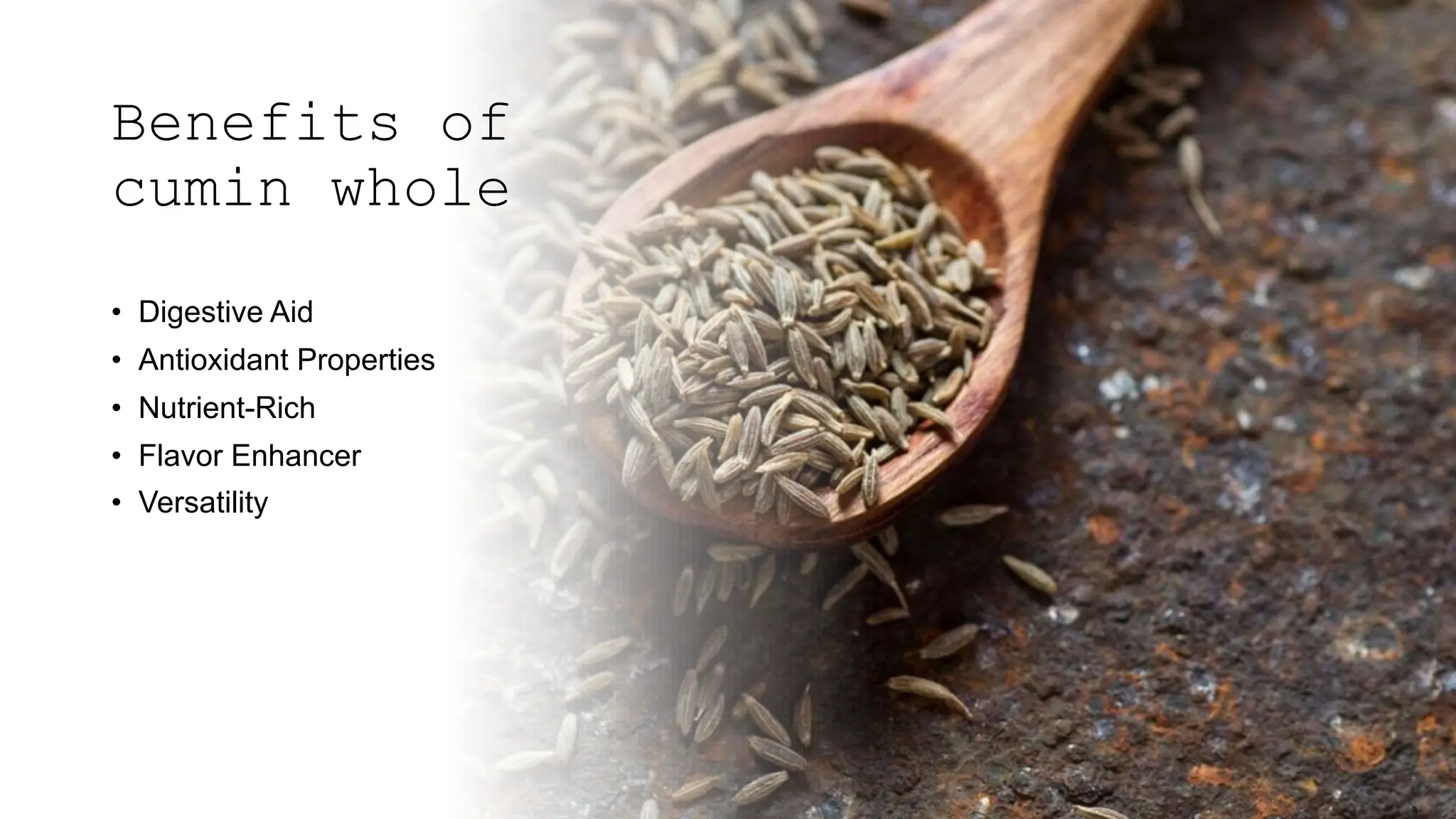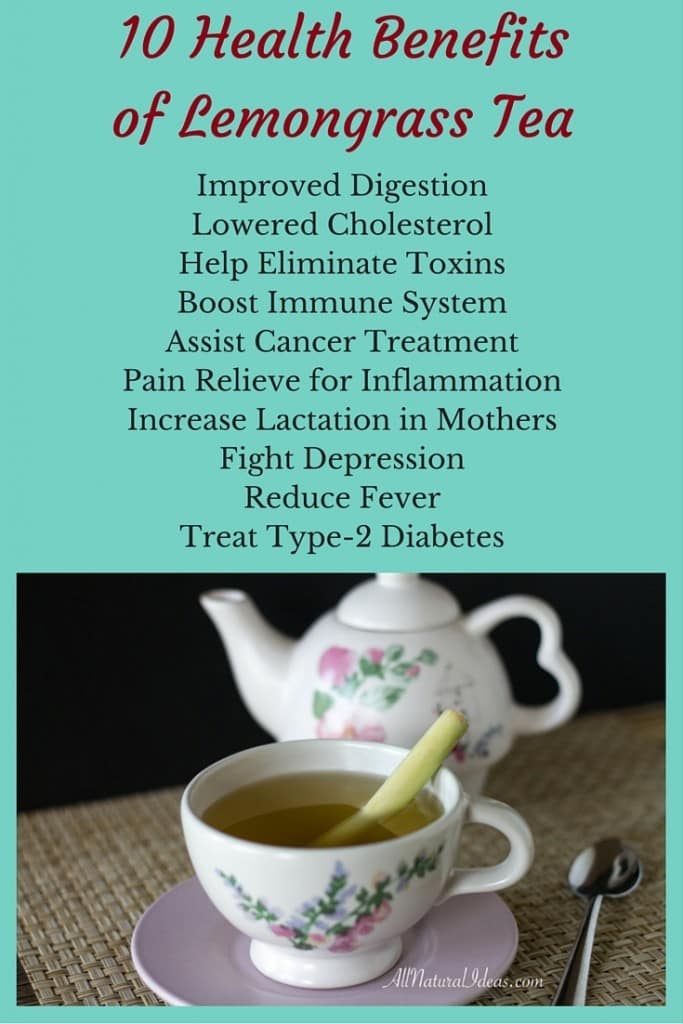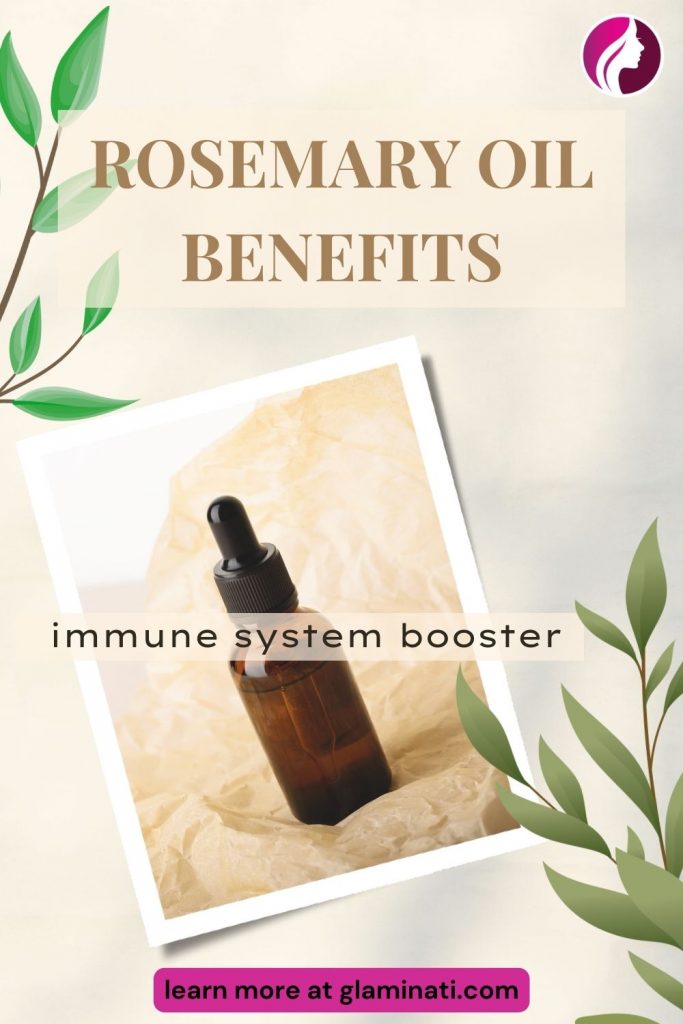Beyond Flavor: Exploring Cumin’s Antioxidant Riches
From the bustling spice markets of ancient civilizations to the meticulously calibrated kitchens of modern gastronomy, cumin has held a venerable position. Its earthy, pungent, and subtly bitter notes are indispensable to countless culinary traditions, imbuing dishes with a warmth and depth that is uniquely its own. Yet, to perceive cumin merely as a flavor enhancer is to overlook a profound truth, a hidden narrative whispered through millennia and finally amplified by the instruments of modern science. Beyond its aromatic allure lies a formidable biochemical arsenal, a veritable treasure trove of compounds that position cumin not just as a spice, but as a potent protector against the insidious forces of oxidative stress. This is the story of cumin’s journey from a humble seed to a recognized antioxidant powerhouse, an odyssey that bridges ancient wisdom with cutting-edge scientific discovery.
The Unveiling of a Culinary Enigma: A Story Begins
Imagine a tiny, unassuming seed, no larger than a grain of rice, cradling within its delicate husk a symphony of chemical compounds. For centuries, humanity instinctively reached for this seed, adding it to stews, rubbing it into meats, and grinding it into medicinal concoctions. The immediate gratification was flavor, the subtle benefit was well-being. But how did these ancient cultures, devoid of electron microscopes and gas chromatographs, intuit its deeper power? This is where our story truly begins – with the gradual unveiling of cumin’s role not just as a taste sensation, but as a silent guardian of health, battling an unseen enemy: free radicals.
The narrative of cumin’s antioxidant riches is a compelling blend of history, ethnobotany, chemistry, and molecular biology. It challenges us to look beyond the superficial and appreciate the profound complexity inherent in nature’s simplest offerings. For the knowledgeable audience, this journey will delve into the specific compounds, the intricate mechanisms, and the scientific validation that underpins cumin’s emerging status as a nutraceutical marvel.
A Tapestry Woven Through Time: Cumin’s Ancient Legacy
Cumin (Cuminum cyminum) is one of humanity’s oldest cultivated spices, with its origins traced back to the Middle East and India over 4,000 years ago. Archaeological excavations have unearthed cumin seeds in ancient Egyptian tombs, testifying to its revered status. The Egyptians not only used it for flavoring food but also as a preservative and in mummification rituals, perhaps intuitively recognizing its antimicrobial and antioxidant properties.
The spice found its way into ancient Greek and Roman culinary and medicinal practices. Hippocrates, the father of medicine, and Pliny the Elder both documented its therapeutic uses, primarily for digestive ailments. In Ayurvedic and Traditional Chinese Medicine, cumin has been prescribed for a vast array of conditions, from indigestion and diarrhea to fever and insomnia. Its traditional application for digestive health, for instance, hints at its ability to reduce inflammation and oxidative stress in the gut – an understanding centuries ahead of its scientific explanation.
The migration of cumin across continents, carried by traders and conquerors, solidified its place in global cuisine. It became a cornerstone of Indian curries, Mexican mole, North African tagines, and Middle Eastern pilafs. This widespread adoption wasn’t merely a matter of taste; it was a testament to its consistent efficacy, both as a culinary enhancer and a subtle, yet powerful, medicinal agent. The consistent thread through all these historical narratives is an implicit trust in cumin’s inherent goodness – a trust that modern science is now meticulously validating and explaining. The ancients understood its power; we are now learning how it exerts that power.
The Science of Protection: Understanding Antioxidants
To truly appreciate cumin’s prowess, we must first understand the adversary: oxidative stress. Life, in its very essence, is a controlled combustion, a constant dance of chemical reactions. A byproduct of this necessary metabolic activity is the generation of highly reactive molecules known as free radicals. These molecules, characterized by an unpaired electron, are inherently unstable and aggressively seek to "steal" electrons from other stable molecules in the body, initiating a damaging chain reaction.
This electron theft, or oxidation, can wreak havoc on vital cellular components:
- Lipid peroxidation: Damages cell membranes, impairing cellular function.
- Protein modification: Alters enzyme activity and structural integrity.
- DNA damage: Can lead to mutations, increasing the risk of cancer and accelerating aging.
When the production of free radicals overwhelms the body’s natural defense systems, oxidative stress ensues. This imbalance is implicated in the pathogenesis of a vast array of chronic diseases, including cardiovascular disease, neurodegenerative disorders (Alzheimer’s, Parkinson’s), diabetes, certain cancers, and accelerated aging processes.
Enter antioxidants. These benevolent molecules act as nature’s firefighters, neutralizing free radicals by donating an electron without becoming unstable themselves. The body produces some endogenous antioxidants (like superoxide dismutase, catalase, and glutathione peroxidase), but dietary intake of exogenous antioxidants from fruits, vegetables, and spices is crucial for maintaining optimal cellular defense. This is where cumin steps onto the stage, not just as a supporting player, but as a lead actor in the drama of cellular protection.
Cumin’s Arsenal: A Symphony of Bioactive Compounds
Cumin’s distinctive flavor profile is attributed to its complex volatile oil fraction, but it is this same fraction, along with an array of non-volatile phenolic compounds, that confers its formidable antioxidant capacity. The seed is a veritable biochemical symphony, with each compound playing a crucial role, often synergistically, to create a robust protective effect.
A. Volatile Oils – The Aromatic Vanguard
The essential oil of cumin, typically comprising 2.5-4.5% of the seed’s weight, is a rich mixture of monoterpenes and their derivatives. Several key compounds stand out for their antioxidant activities:
- Cuminaldehyde (4-isopropylbenzaldehyde): This is the most abundant and arguably the most significant volatile compound in cumin, often making up 25-50% of the essential oil. Cuminaldehyde is a potent free radical scavenger. Its chemical structure, particularly the aldehyde group and the isopropyl substituent on the benzene ring, facilitates its ability to donate electrons and stabilize reactive oxygen species (ROS). Studies have demonstrated its ability to inhibit lipid peroxidation and protect DNA from oxidative damage.
- Cymene (p-Cymene): Another major constituent, cymene contributes to cumin’s aroma and possesses notable antioxidant and anti-inflammatory properties. While perhaps less potent than cuminaldehyde as a direct scavenger, it contributes to the overall antioxidant milieu and can modulate enzyme activities related to oxidative stress.
- Thymol: Though present in smaller quantities than cuminaldehyde or cymene, thymol is a powerful monoterpenoid phenol known for its strong antiseptic, antimicrobial, and antioxidant activities. It enhances the overall protective capacity of the essential oil.
- Gamma-Terpinene: This monoterpene also contributes to the antioxidant profile, working alongside other compounds to neutralize free radicals.
The presence of these compounds in concert creates a multifaceted defense system. The beauty lies in their combined action, where the sum is often greater than the individual parts.
B. Phenolic Acids and Flavonoids – The Unsung Heroes
Beyond the volatile oils, cumin is also rich in a diverse array of non-volatile phenolic compounds, which are often overlooked but contribute significantly to its antioxidant power. These include phenolic acids and flavonoids.
-
Phenolic Acids:
- Caffeic Acid: A widely distributed hydroxycinnamic acid, caffeic acid is a powerful antioxidant known to scavenge free radicals, chelate metal ions, and inhibit lipid peroxidation.
- Ferulic Acid: Another prominent hydroxycinnamic acid, ferulic acid is a strong antioxidant found in plant cell walls. It protects against UV-induced damage, scavenges various free radicals (superoxide, hydroxyl radical), and inhibits pro-oxidant enzymes.
- Gallic Acid: A hydroxybenzoic acid, gallic acid is a well-known antioxidant with anti-inflammatory and anti-cancer properties. It directly scavenges free radicals and can modulate cellular antioxidant defenses.
-
Flavonoids: These ubiquitous plant pigments are renowned for their potent antioxidant properties. While specific flavonoid profiles can vary, cumin has been shown to contain:
- Quercetin: One of the most studied flavonoids, quercetin is a powerful scavenger of various free radicals and can chelate metal ions. It also exhibits anti-inflammatory and anti-carcinogenic effects.
- Kaempferol: Similar to quercetin, kaempferol possesses strong antioxidant and anti-inflammatory activities, protecting cells from oxidative damage.
- Apigenin and Luteolin: These flavones also contribute to cumin’s antioxidant capacity, offering neuroprotective and anti-inflammatory benefits.
Phenolic acids and flavonoids exert their antioxidant effects through multiple mechanisms, including direct free radical scavenging, metal ion chelation (preventing pro-oxidant reactions), and modulation of endogenous antioxidant enzyme systems. They are particularly effective at inhibiting lipid peroxidation, a key process in cellular aging and disease.
C. Other Contributing Factors
Cumin also contains other bioactive compounds like tannins, saponins, and various terpenoids, each contributing to its overall health-promoting properties, including antioxidant, anti-inflammatory, and antimicrobial effects. The synergistic interplay of all these compounds ensures a robust and comprehensive protective strategy. This holistic effect is a hallmark of whole foods and spices – a complexity that isolated supplements often struggle to replicate.
The Mechanism Unveiled: How Cumin Fights Oxidative Stress
The story of cumin’s antioxidant action isn’t just about identifying its components; it’s about understanding how these components orchestrate their protective symphony at a molecular level. The mechanisms are multifaceted and sophisticated:
-
Direct Free Radical Scavenging: This is the most straightforward mechanism. The phenolic compounds (cuminaldehyde, thymol, flavonoids, phenolic acids) in cumin possess specific chemical structures (e.g., hydroxyl groups on aromatic rings) that allow them to readily donate an electron to stabilize highly reactive free radicals like superoxide anions (O₂⁻•), hydroxyl radicals (•OH), and peroxyl radicals (ROO•). By neutralizing these radicals, cumin components prevent them from initiating damaging chain reactions within cells.
-
Metal Ion Chelation: Certain metal ions, particularly iron (Fe²⁺) and copper (Cu²⁺), can act as pro-oxidants. In the presence of hydrogen peroxide, these metal ions can catalyze the formation of highly destructive hydroxyl radicals through the Fenton reaction. Cumin’s phenolic compounds, especially flavonoids and certain phenolic acids, possess chelating properties. They can bind to these metal ions, rendering them inactive and thus preventing them from participating in pro-oxidant reactions, effectively shutting down a major source of oxidative damage.
-
Modulation of Endogenous Antioxidant Enzymes: Perhaps one of the most significant and sophisticated mechanisms is cumin’s ability to influence the body’s own defense systems. Many of cumin’s bioactive compounds can:
- Upregulate Antioxidant Enzymes: They activate signaling pathways, such as the Nrf2 (Nuclear factor erythroid 2-related factor 2) pathway. Nrf2 is a master regulator of antioxidant and detoxification genes. When activated, Nrf2 translocates to the nucleus and binds to antioxidant response elements (AREs), promoting the expression of crucial endogenous antioxidant enzymes like:
- Superoxide Dismutase (SOD): Converts superoxide radicals into less harmful hydrogen peroxide.
- Catalase (CAT): Breaks down hydrogen peroxide into water and oxygen.
- Glutathione Peroxidase (GPx): Reduces hydrogen peroxide and organic hydroperoxides.
- By enhancing the activity of these natural cellular defenses, cumin strengthens the body’s intrinsic ability to cope with oxidative stress over the long term, offering a sustainable protective strategy.
- Upregulate Antioxidant Enzymes: They activate signaling pathways, such as the Nrf2 (Nuclear factor erythroid 2-related factor 2) pathway. Nrf2 is a master regulator of antioxidant and detoxification genes. When activated, Nrf2 translocates to the nucleus and binds to antioxidant response elements (AREs), promoting the expression of crucial endogenous antioxidant enzymes like:
-
Inhibition of Pro-oxidant Enzymes: Conversely, some compounds in cumin may inhibit enzymes that generate free radicals. For instance, some flavonoids can inhibit xanthine oxidase, an enzyme that produces superoxide radicals, and NADPH oxidase, another major source of ROS in inflammatory cells.
-
Anti-inflammatory Pathways: Oxidative stress and inflammation are inextricably linked, often forming a vicious cycle. Free radicals can activate pro-inflammatory signaling pathways (e.g., NF-κB), leading to the production of inflammatory cytokines. Cumin’s antioxidant compounds, through their direct scavenging and enzyme modulation, can effectively dampen these inflammatory responses, thus breaking the cycle and providing a holistic protective effect. For example, cuminaldehyde has been shown to suppress NF-κB activation, reducing the expression of inflammatory mediators.
This intricate interplay of mechanisms paints a picture of cumin as a highly sophisticated natural agent, capable of not only directly neutralizing threats but also bolstering the body’s own internal defenses, offering a comprehensive shield against oxidative damage.
The Weight of Evidence: Scientific Scrutiny and Validation
The journey from ancient folklore to modern scientific acceptance requires rigorous testing and validation. Over the past few decades, a growing body of research has meticulously dissected cumin’s antioxidant properties across various scientific platforms.
In Vitro Studies (Test Tube and Cell Culture)
Early investigations typically involve in vitro (in glass) studies, which provide controlled environments to assess specific activities. Cumin extracts and its isolated compounds have been subjected to various antioxidant assays:
- DPPH (2,2-diphenyl-1-picrylhydrazyl) and ABTS (2,2′-azino-bis(3-ethylbenzothiazoline-6-sulfonic acid)) assays: These widely used spectrophotometric methods measure the ability of a compound to scavenge stable free radicals. Cumin extracts consistently demonstrate strong radical scavenging activity, comparable to or even exceeding synthetic antioxidants like BHT and BHA in some studies.
- FRAP (Ferric Reducing Antioxidant Power) assay: This assay measures the reducing power of an antioxidant, reflecting its ability to donate electrons. Cumin has shown significant ferric reducing capacity.
- Cell-based assays: Studies on various cell lines (e.g., human fibroblasts, liver cells) exposed to oxidative stress (induced by hydrogen peroxide or other pro-oxidants) have shown that cumin extracts protect cells from damage, reduce lipid peroxidation, and preserve cellular viability. These studies often demonstrate the upregulation of endogenous antioxidant enzymes within the cells after cumin treatment.
These in vitro findings provide compelling preliminary evidence of cumin’s direct antioxidant potential and its ability to protect cells from oxidative insult.
Animal Studies (In Vivo Models)
Moving beyond the test tube, in vivo (in living organisms) studies using animal models (typically rats or mice) offer insights into how cumin behaves within a complex biological system. These studies often mimic human disease conditions involving oxidative stress:
- Diabetes Models: In diabetic rats, where oxidative stress is a major contributor to complications, cumin supplementation has been shown to reduce blood glucose levels, decrease markers of oxidative stress (e.g., malondialdehyde, a lipid peroxidation product), and increase the activity of antioxidant enzymes like SOD, CAT, and GPx in various tissues (liver, kidney, pancreas).
- Liver Injury Models: Animals with chemically induced liver damage (e.g., by carbon tetrachloride) often exhibit severe oxidative stress. Cumin administration has been found to mitigate liver damage, reduce markers of oxidative stress, and restore antioxidant enzyme levels, indicating a hepatoprotective effect linked to its antioxidant properties.
- Neurodegenerative Models: Some studies suggest that cumin extracts can offer neuroprotection in models of neurodegeneration, again by reducing oxidative stress markers and preserving neuronal integrity.
- Anti-inflammatory Models: In models of inflammation, cumin has been shown to reduce oxidative stress parameters associated with the inflammatory response, highlighting the intertwined nature of oxidation and inflammation.
Animal studies consistently reinforce the in vitro findings, demonstrating that cumin, when consumed, can exert significant antioxidant effects within a living organism, modulating physiological responses and offering protection against various forms of oxidative damage.
Human Studies (Clinical Evidence and Challenges)
While in vitro and animal studies provide strong foundational evidence, the ultimate validation comes from human clinical trials. Here, the evidence specifically for cumin’s antioxidant effects in humans, when consumed as a spice or supplement, is less abundant but growing.
- Indirect Evidence: Many human studies on cumin focus on its effects on cholesterol, blood sugar, weight loss, or digestive health. These benefits are often indirectly linked to or mediated by its antioxidant and anti-inflammatory properties. For instance, improved lipid profiles or reduced inflammation in diabetic patients treated with cumin could be partially attributed to its ability to combat oxidative stress.
- Bioavailability: A critical consideration in human studies is the bioavailability of the active compounds. How much of cuminaldehyde or quercetin is absorbed, metabolized, and reaches target tissues in an active form? This can be influenced by dosage, food matrix, and individual variations.
- Challenges: Conducting large-scale human trials specifically on the antioxidant effects of a single spice is complex. Diet is multifactorial, and isolating the impact of cumin from other dietary antioxidants can be difficult. Moreover, measuring direct changes in systemic oxidative stress markers in healthy individuals might require very sensitive techniques and prolonged intervention.
Despite these challenges, some human trials have shown promising results. For example, studies on obese individuals or those with metabolic syndrome have indicated that cumin supplementation can improve antioxidant status by reducing lipid peroxidation and increasing serum antioxidant capacity. A study on diabetic patients showed that cumin powder reduced markers of oxidative stress and improved antioxidant enzyme activities.
The story of cumin’s antioxidant validation in humans is still unfolding, but the consistent positive findings from in vitro and in vivo studies, coupled with preliminary human data and centuries of traditional use, paint a compelling picture. The scientific community is increasingly recognizing cumin not just as a flavorful ingredient but as a nutraceutical with significant potential in preventing and managing oxidative stress-related diseases.
Beyond the Lab: Integrating Cumin’s Riches into Daily Life
The scientific revelation of cumin’s antioxidant prowess is not just an academic curiosity; it’s a call to action for integrating this ancient spice more consciously into our daily lives. Its culinary versatility makes this integration both effortless and delicious.
- Whole Seeds vs. Ground Powder: Whole cumin seeds, when toasted, release a deeper, nuttier flavor and can be added to tempering oils for curries, roasted vegetables, or rice dishes. Ground cumin powder, derived from roasted or unroasted seeds, offers a more intense, immediate flavor and disperses easily into sauces, rubs, and marinades. Both forms retain significant antioxidant properties, though some volatile compounds may diminish over time in ground form.
- Culinary Applications:
- Indian and Middle Eastern Cuisine: Cumin is fundamental to countless dishes – dals, curries, biryanis, falafel, hummus, tagines.
- Mexican and Latin American Cuisine: Essential in chili powders, tacos, enchiladas, and refried beans.
- Mediterranean and North African: Found in harissa, couscous, and roasted lamb.
- Western Cuisine: Can be used to enhance roasted root vegetables, stews, soups, or even sprinkled on eggs and avocado toast for an earthy kick.
- Formulations: Beyond whole and ground seeds, cumin essential oil and standardized extracts are available, particularly in the supplement market. While these offer concentrated doses of specific compounds, the synergistic effect of the whole seed, with its full spectrum of volatile and non-volatile compounds, is often considered superior for holistic health benefits.
- Quality and Sourcing: As with any natural product, the antioxidant content can vary depending on cultivar, growing conditions, harvesting, and processing. Opting for organic, high-quality cumin from reputable sources ensures maximum potency.
- Moderation and Synergy: While cumin is incredibly beneficial, it is a spice meant to be enjoyed in culinary quantities. Its power lies in its consistent inclusion as part of a balanced, antioxidant-rich diet, rather than relying on mega-doses. It synergizes beautifully with other antioxidant-rich spices like turmeric, coriander, and black pepper, creating a robust dietary defense.
The story of cumin is a testament to the fact that sometimes, the greatest treasures are hidden in plain sight. This humble seed, celebrated for millennia for its flavor, is now revealing its deeper narrative as a sophisticated biochemical marvel, a guardian against the invisible forces that threaten our health.
Conclusion: A Legacy Reimagined
The journey of cumin, from an ancient culinary staple to a modern scientific marvel, is a compelling narrative of discovery. It’s a story that underscores the profound wisdom embedded in traditional practices and the power of scientific inquiry to validate and illuminate these age-old truths. We began by acknowledging cumin’s familiar role in the kitchen, but through exploration, we’ve delved deep into its hidden biochemical landscape, revealing a rich tapestry of antioxidant compounds working in sophisticated harmony.
The cuminaldehyde, cymene, thymol, flavonoids, and phenolic acids within this unassuming seed are not merely passive molecules; they are active agents, directly neutralizing free radicals, chelating damaging metal ions, and, perhaps most impressively, orchestrating our body’s own intrinsic antioxidant defenses. The scientific evidence, meticulously gathered from in vitro assays, animal models, and emerging human trials, paints a clear picture: cumin is a potent ally in the perennial battle against oxidative stress, a silent contributor to cellular longevity and disease prevention.
This narrative invites us to look beyond flavor, to appreciate the intricate design of nature’s pharmacy, and to reintegrate such powerful botanicals more consciously into our lives. Cumin stands as a humble, yet extraordinary, example of how a simple spice can embody centuries of cultural significance and cutting-edge scientific promise. It reminds us that often, the most profound health benefits are woven into the fabric of our everyday existence, waiting to be fully understood and embraced. The story of cumin’s antioxidant riches is far from over; it continues to unfold, inviting further research and deeper appreciation for this timeless gift from the earth.







